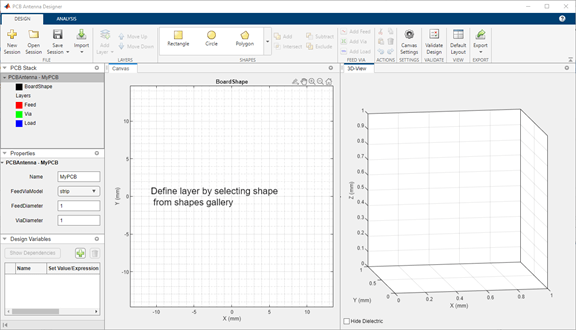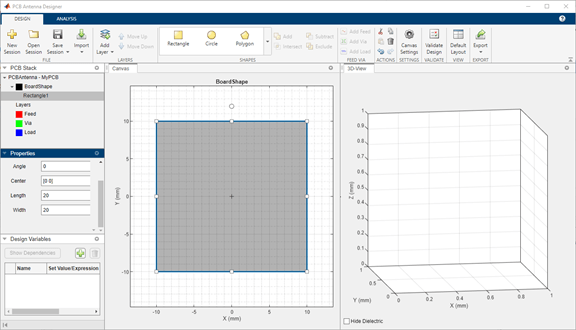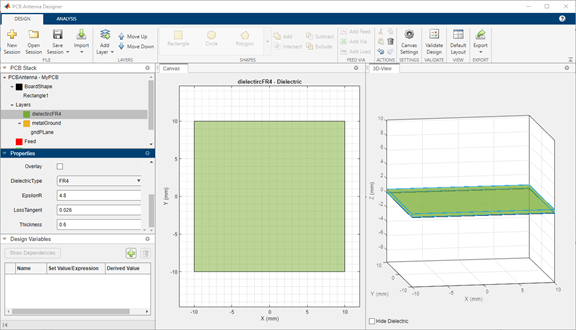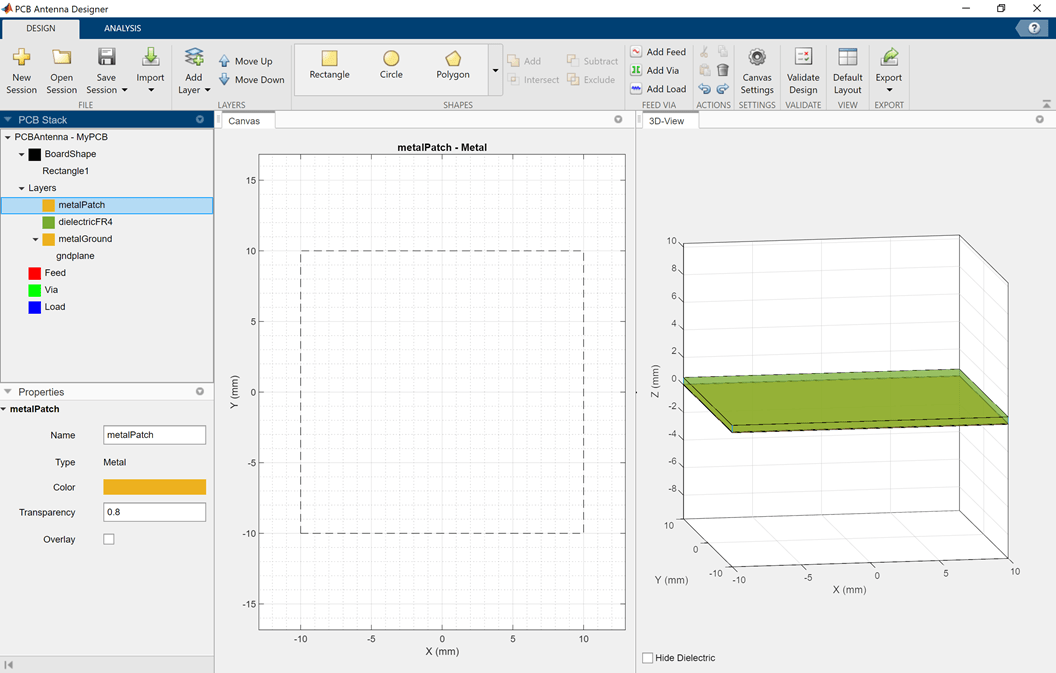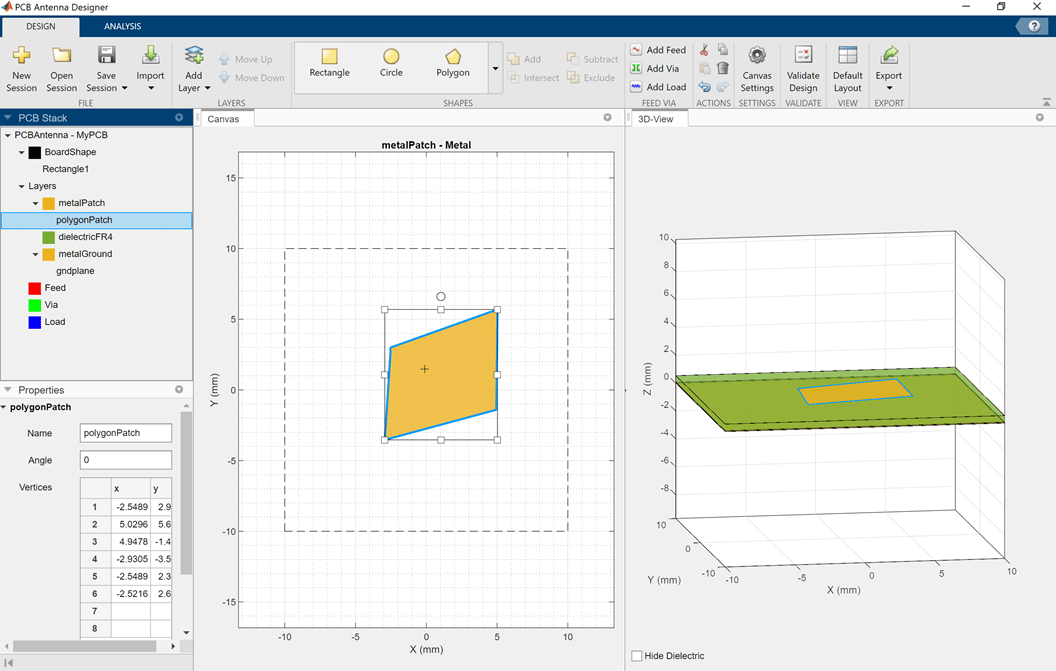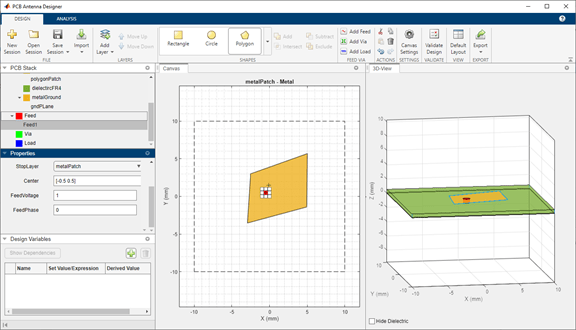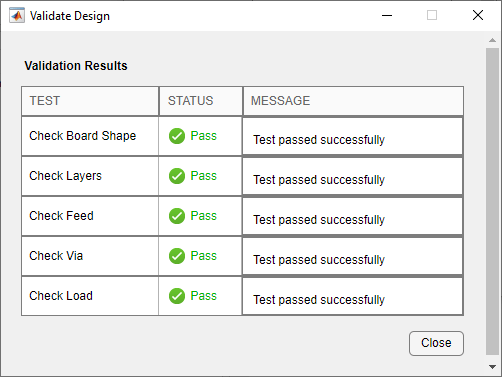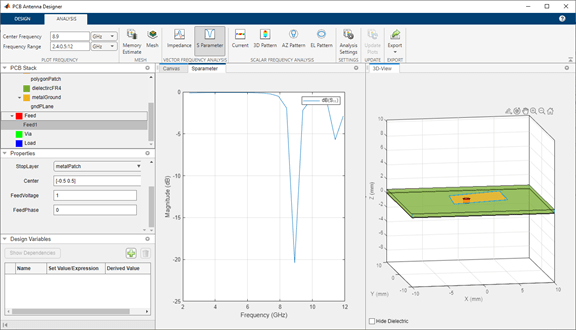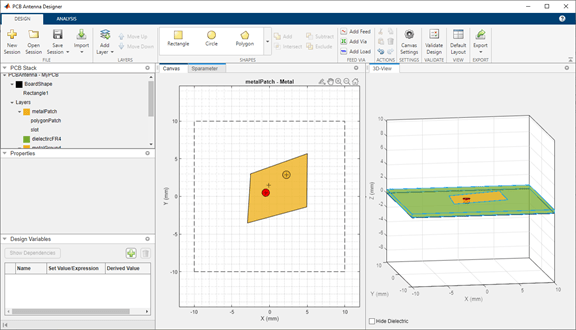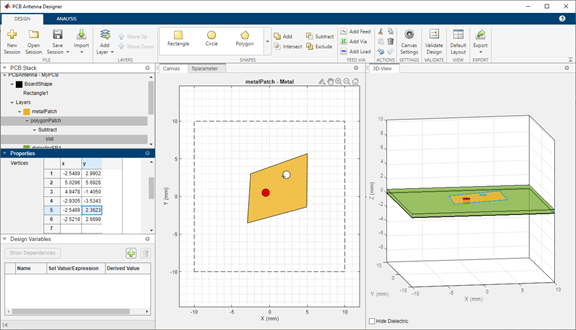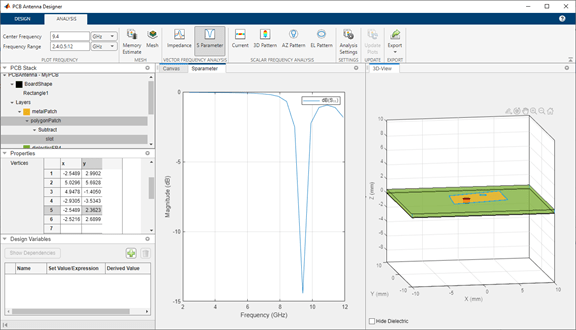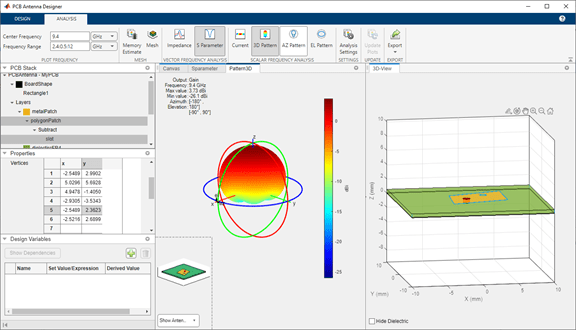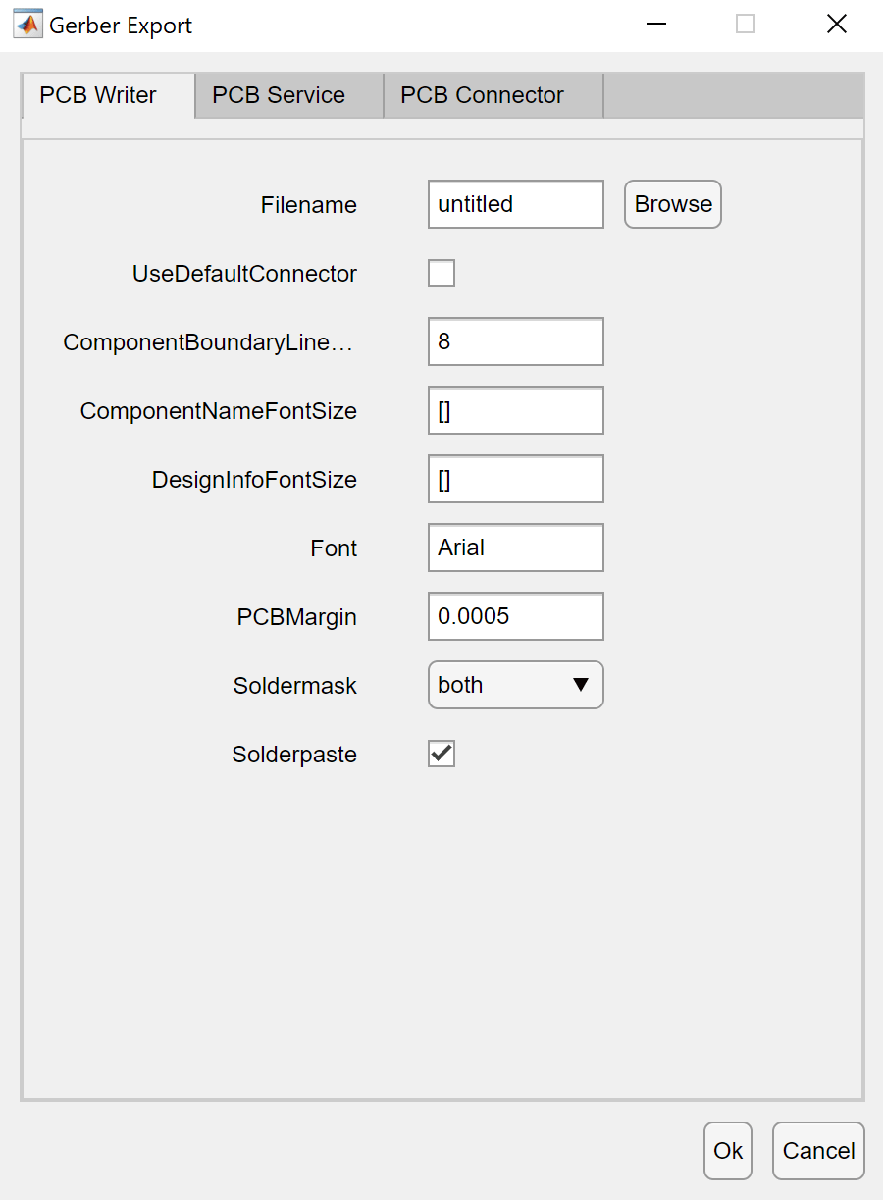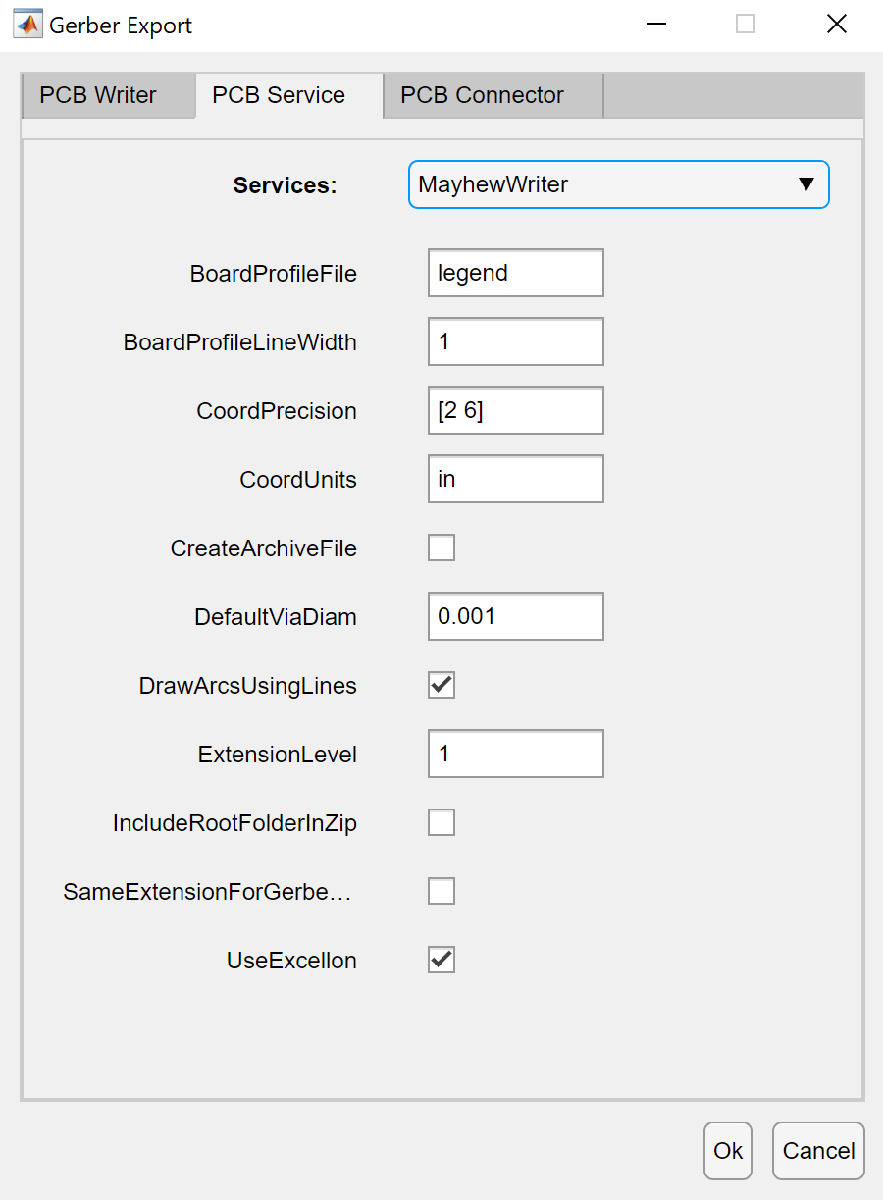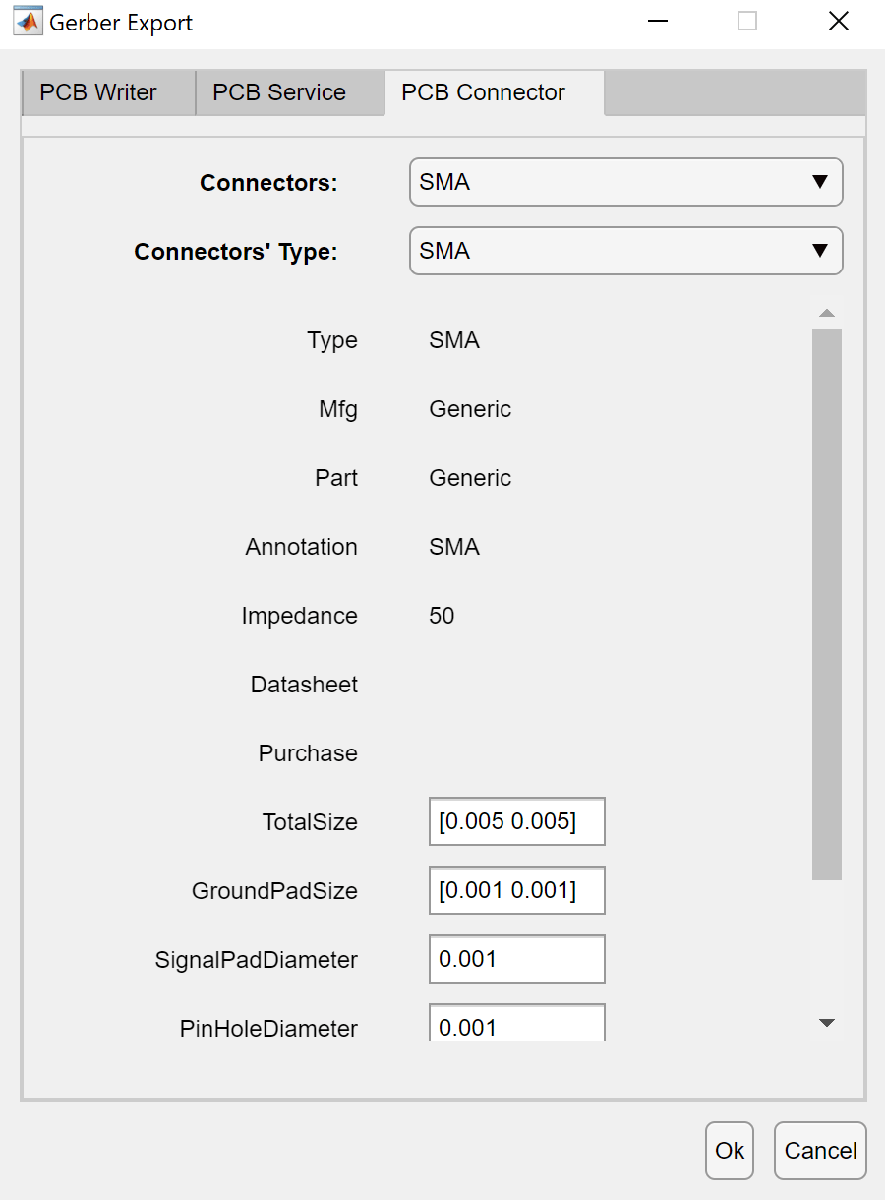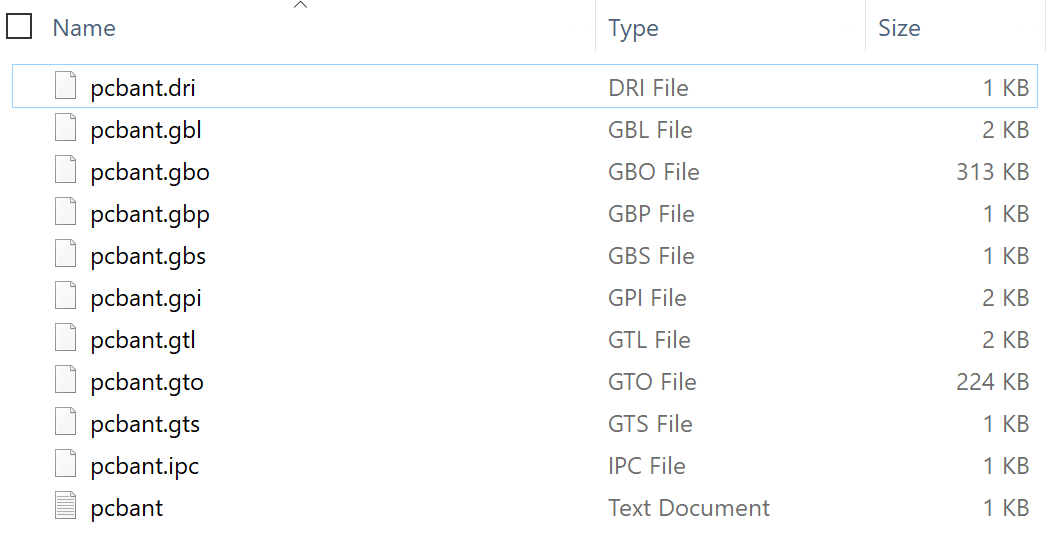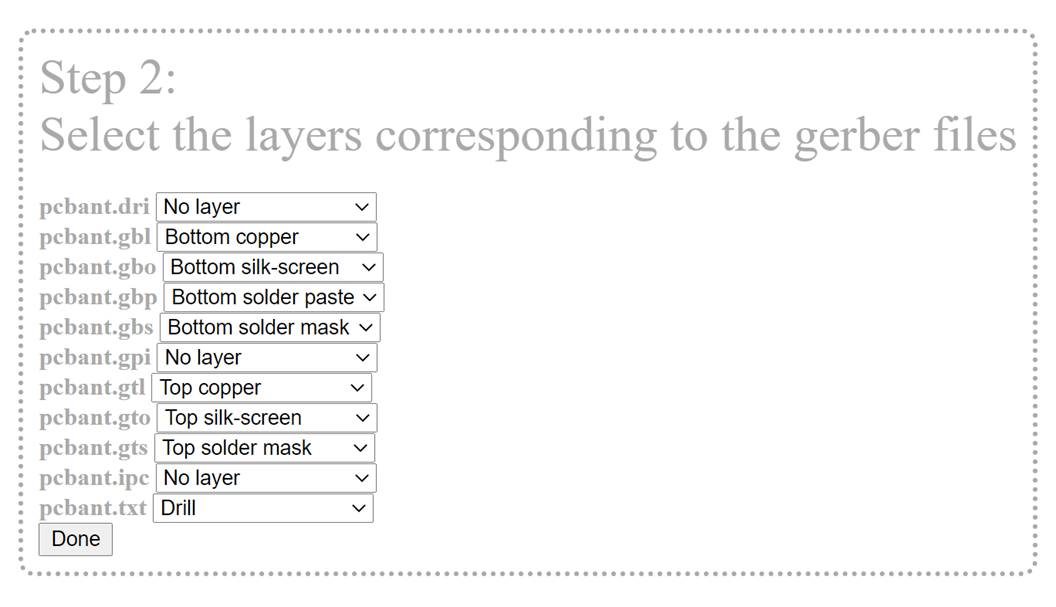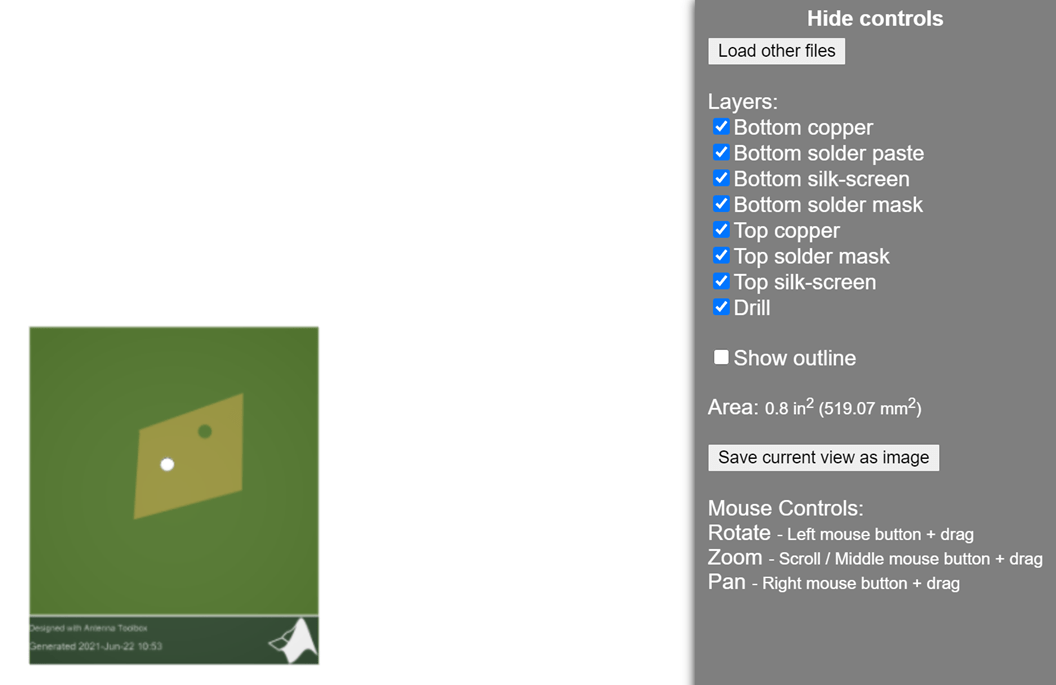Type this command at the command line to open the PCB Antenna Designer app.
On the Design tab click New Session to start a new session and open a blank canvas.
The default units for the canvas are in millimeters (mm). The app uses global units and you can change the units using the Canvas Settings button.
Define Board Shape
Select Rectangle from the Shapes section on the toolbar. Drag the shape on the canvas to create a rectangle and change the properties of Rectangle1 in the Properties pane to the following:
Center — [0,0]
Length — 20
Width — 20
Add Ground Plane
Click Add Layer on the toolbar and then select Metal Layer. The shape of the board is represented as a dotted line on the canvas. Rename this layer to metalGround and then change the default color to [0.93 0.69 0.13].
The default metal type is PEC. To change the metal type, select Layers and then select a metal from the Type drop-down list. Use the default metal type for this example.
Select Rectangle from the Shapes section and drag the shape on the canvas to create a rectangular ground plane. Set the properties of the ground plane to the following
Name — gndplane
Center — [0,0]
Length — 20
Width — 20
Add Dielectric Layer
Click Add Layer and then select Dielectric Layer to create a dielectric layer. A dielectric layer is created with the dimensions of the board shape. Set the properties of the layer to the following:
Name — dielectricFR4
DielectricType — FR4
Color — [0.47 0.67 0.19]
Transparency — 0.5
Thickness — 0.6
Create Polygon Patch
Click Add Layer and then select Metal Layer. Rename the metal layer to metalPatch.
Select Polygon from the Shapes section. Select the vertices on the canvas to create a polygon patch. Set the properties of the polygon to the following:
Name — polygonPatch
Angle — 0
Under Vertices set the following values:
x1 = –2.5489 and y1 = 2.9902,
x2 = 5.0296 and y2 = 5.6928,
x3 = 4.9478 and y3 = –1.4050,
x4 = –2.9305 and y4 = –3.5343,
x5 = –2.5489 and y5 = 2.3623 and
x6 = –2.5216 and y1 = 2.6899
Add Feed
Click Add Feed from the Feed Via section on the toolbar. Set the properties of the feed to the following:
Name — Feed1
StartLayer — metalGround
StopLayer — metalPatch
Center — [– 0.5 0.5]
Validate Your Design
Click Validate Design on the toolbar to validate your board shape, layers, feed, via, and load.
Analyze Your Design
In the Analysis tab, set Center Frequency to 8.9 GHz and Frequency Range to 2.4:0.5:12 GHz. Click S-parameters under the Vector Frequency Analysis section to plot the reflection coefficient of the PCB patch antenna. The PCB patch antenna resonates at 8.9 GHz.
This example employs adding a slot to shift the resonant frequency. To add a circular slot, in the Design tab, select metalPatch and then select the Circle in the Shapes. Set the properties of the circle to the following:
Select the polygonPatch and the slot you created in the previous step and then select Subtract on the toolbar.
In the Analysis tab, set Center Frequency to 9.4 GHz and click Update Plots. The PCB patch antenna now resonates at 9.4 GHz.
Click 3D Pattern in the Scalar Frequency Analysis section to plot the 3D radiation pattern. The directivity of the PCB patch antenna is 3.69 dBi.

